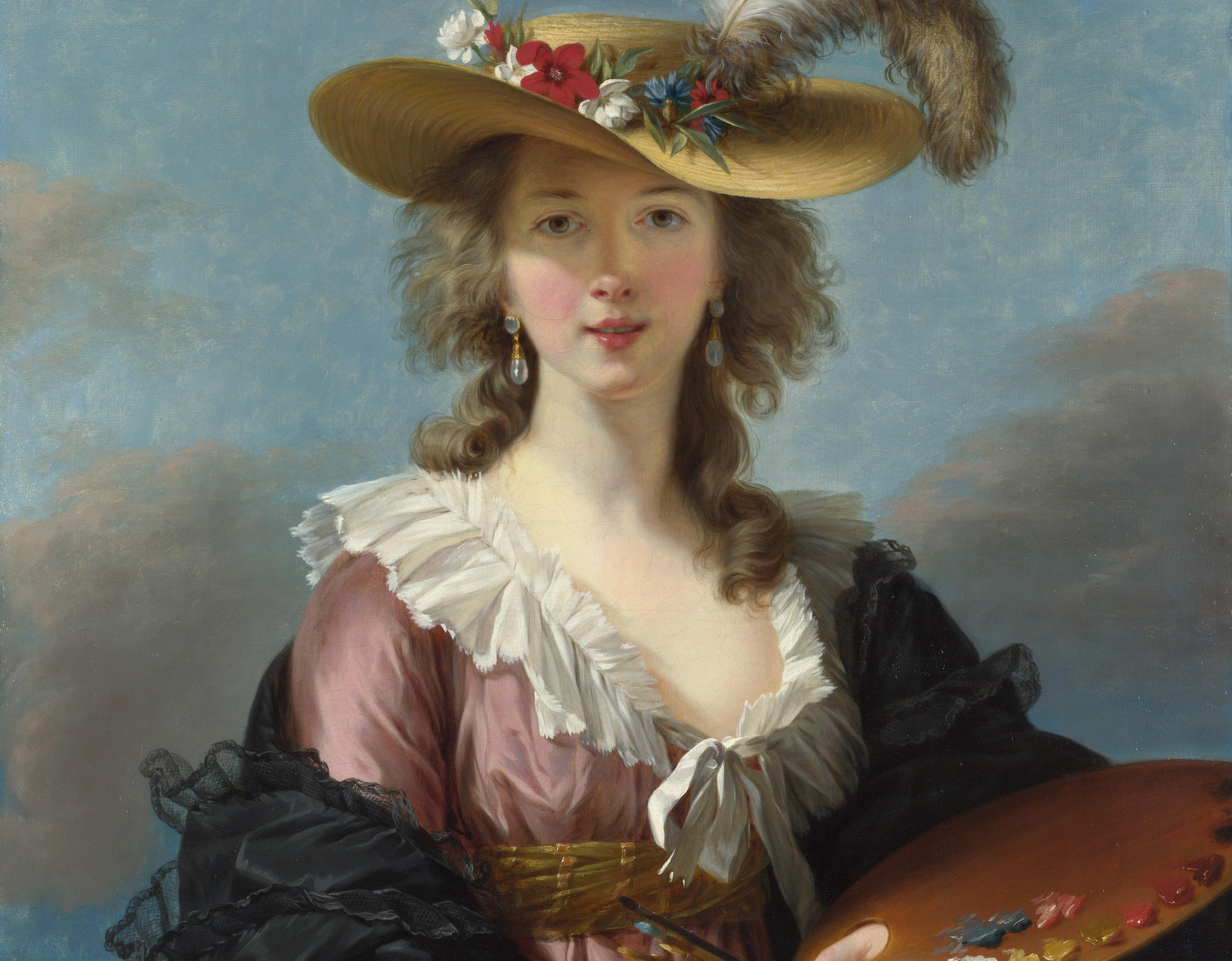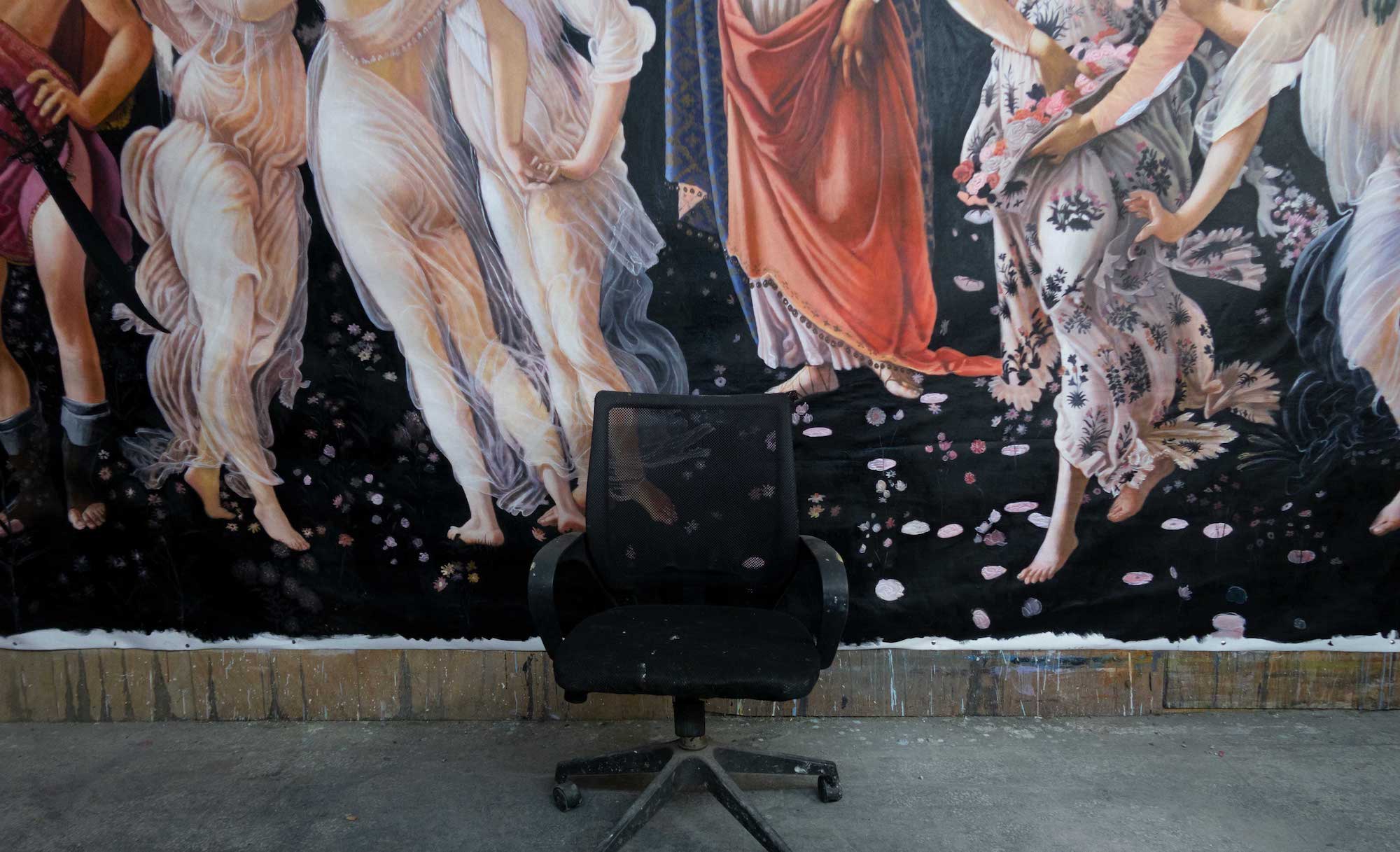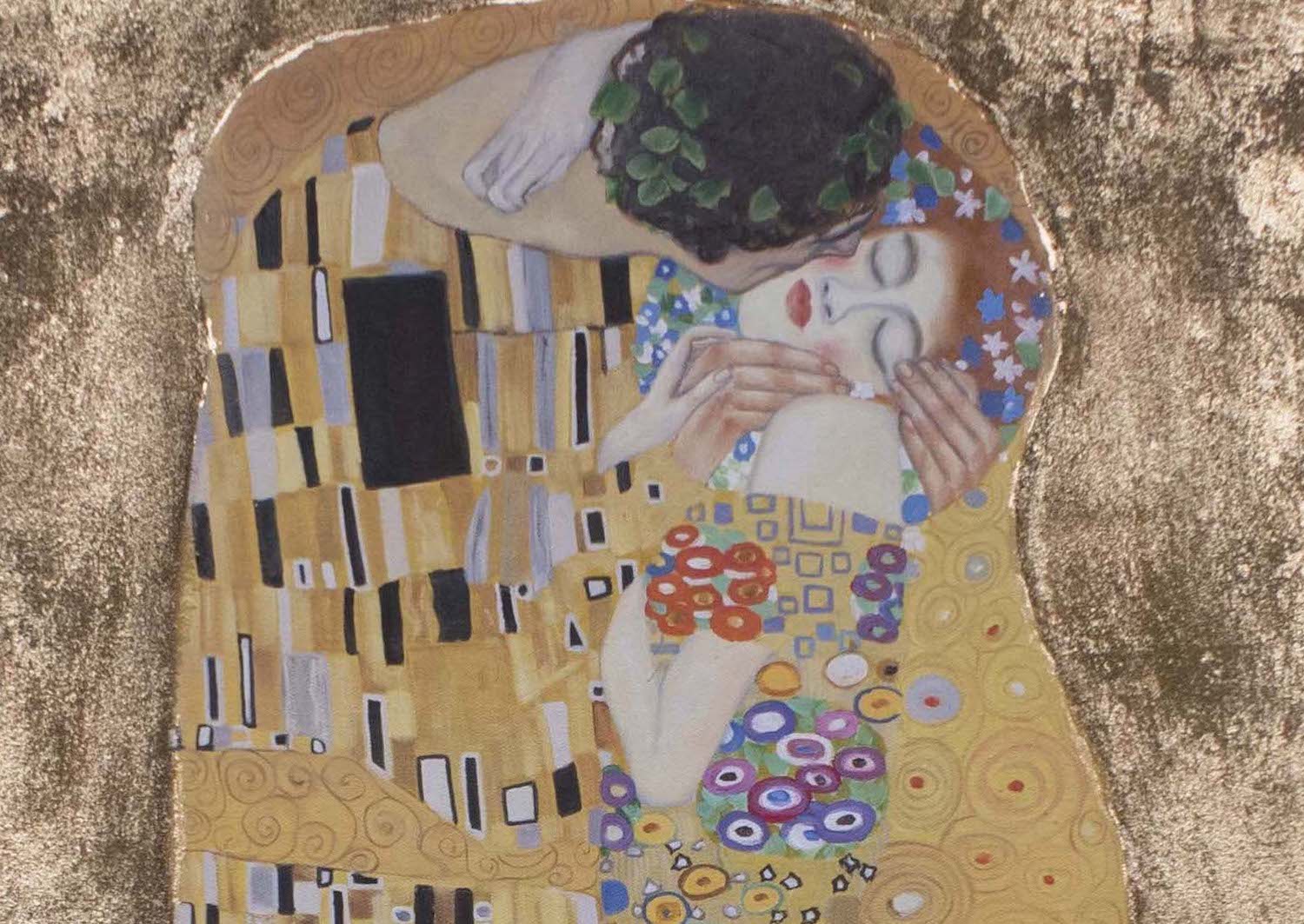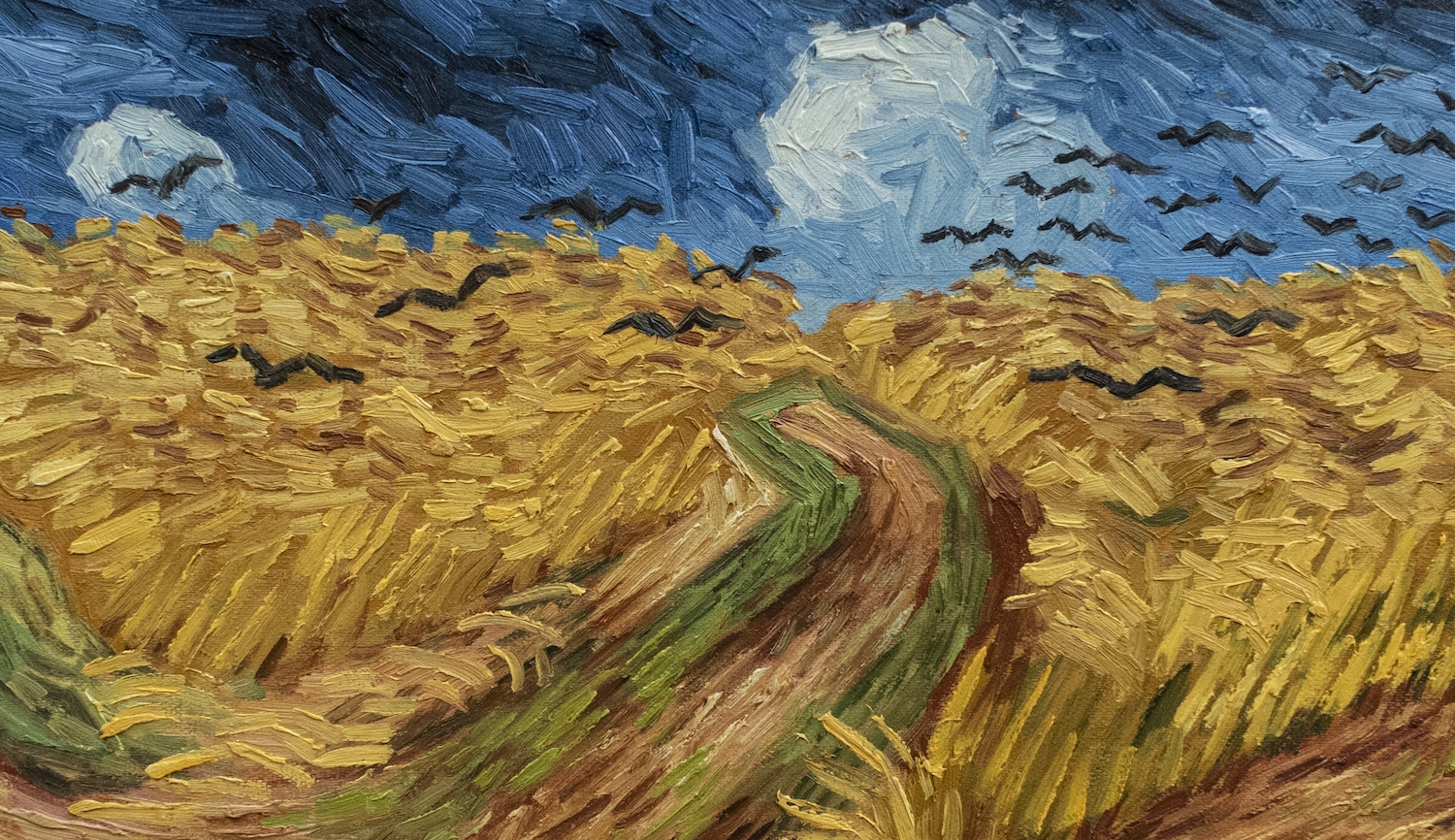A small percentage of significant permanent collections in the United States and Europe contain works by female artists. Compared to men's artwork, women's art sells at substantial discounts. Despite being the subject of roughly half of the top 25 paintings, only two works by women have ever entered the top 100 painting auction sales.
Women were barred mainly from artistic professions and training until the 1870s. Although women have traditionally faced bias and discrimination when trying to further their careers in the arts, innumerable accomplished women artists have left their mark on the world of visual arts. From the Renaissance to American modernism and beyond, women have always played pivotal roles in the arts. These painters produced groundbreaking works and established new schools of thought and painting methods that influenced contemporary creators.
Barriers Female Artists Faced
All of the liberties that modern western women enjoy are relatively recent developments. Women who achieved prominence in their fields centuries ago seldom had any say in politics and were often silenced in the creative sphere as well. It was already difficult for artists to make a living in Europe between the 15th and 19th centuries without contending with the additional obstacles women faced.
Before the turn of the 20th century, women could only work in the arts if they were hired by the monarchy, aristocracy, or church. Only if the woman's father was also an artist was she likely to get entrance into a guild, which was seen as a stepping stone to a successful creative career.
Court-supported art academies eventually replaced guild houses as the traditional entry point into the art world. The Academy was a significant advancement for artists because it freed them from the shackles of the guilds and allowed them to choose their paths in the world.
Another barrier that limited women artists' freedom of expression was the subject matter they were expected to portray. Women were forbidden from painting naked models because they were considered too sensitive. Since nude paintings had been a significant subgenre for so long, this loss of exposure was devastating. Since portraiture was off-limits to female painters, they turned to still life. The ability of early women artists to flourish was limited by their exclusion from the dominant artistic movement.
Gender Equality After World War I
From the 15th through the 19th century, only privileged women had access to art instruction. It would be possible for experienced female artists to provide individual education to these women. The few honored mothers could also afford to send their daughters to one of the few private training institutions.
Restrictions on women in art did not begin to ease until after World War I. There was progress toward gender parity, but women couldn't express themselves creatively. There was a noticeable uptick in the number of women who make a living as artists after gender equality was established in the law. During World War II, women still suffered discrimination in the art world because of the expectation that they played the role of the "national socialist lady."
Many female artists have existed throughout history but have had to fight for their place in the spotlight. Look at some well-known female artists who created stunning works under severe limitations, among 500+ female artists on PaintingZ.
Sofonisba Anguissola (Italian, ca. 1532 -1625)
Sofonisba Anguissola, or Sofonisba Angussola, or Sofonisba Anguisciola, was an Italian Renaissance painter born in Cremona to a modest, noble family about 1532 and died on November 16, 1625. She was exposed to various subjects, including the arts, and her experience as an apprentice to local artists paved the way for other women to pursue art school. When Anguissola was a young lady, she visited Rome, where she met Michelangelo, who saw her potential at once, and Milan, where she painted the Duke of Alba. In 1559, Anguissola was summoned to Madrid in the capacity of lady-in-waiting to serve as a tutor to the Spanish queen, Elizabeth of Valois, an avid amateur painter. The Spanish court commissioned her to paint official portraits of royalty, and she eventually became well-known for her work under King Philip II. Philip assisted in setting up an elite marriage for her after the queen's passing. Later, she became a significant portrait painter in Pisa and Genoa after relocating from Sicily.
Her self-portraits and those of her family, created before she arrived at the Spanish court, are among her most recognizable and beautiful works. Her portrayals of kids, in particular, were new and insightful. As one of Spain's first and most successful women court painters, she produced official, high-status portraits for the royal family. Her later religious paintings have been lost, although she also painted secular topics. At the age of 93, she passed away in Palermo in 1625.
Artemisia Gentileschi (Italian, 1593 -1652)
The female painter Artemisia is the most well-known of the 17th century. Working for the likes of the Grand Duke of Tuscany and King Philip IV of Spain, she logged time in the capitals of Rome, Florence, Venice, Naples, and London.
Artemisia was the eldest of her father, Orazio Gentileschi's five daughters, and his only daughter. The painting "Susanna and the Elders" (in the Schloss Weißenstein collection in Pommersfelden, Germany) is Artemisia's oldest dated and signed work. It was completed in 1610. After a year, Artemisia was sexually assaulted by the painter Agostino Tassi, a friend and colleague of her father's. In 1612, a notorious trial took place, which is still preserved in voluminous records. Even though Tassi was judged guilty and exiled from Rome, his penalty was never carried out.
After her trial, Artemisia wed a relatively unknown Florentine artist named Pierantonio di Vincenzo Stiattesi and moved from Rome to Florence. There she became the first woman to be accepted into the Academy of Arts and Drawing in 1616, after which she went on to have five children and establish herself as an independent artist. Creditors pursued Artemisia after she ran up debts and returned to Rome in 1620, where she stayed for the next decade (except for a trip to Venice in 1628).
In 1630, she established a home and workshop in Naples, where she remained until her death. While in London in 1639, she may have helped her sick father paint the ceiling of the Queen's House in Greenwich (now Marlborough House in London), but by 1640 she had returned to Naples. Even though her death date is shrouded in mystery, a recently unearthed document indicates she was still alive and well in Naples as late as August 1654.
Rosalba Carriera (Italian, 1675 -1757)
Carriera started her career painting miniatures, specializing in portraits and symbolic themes. Her parents worked as a secretary and a lacemaker, respectively. Her fame increased in the Italian art world due to these pieces, and in 1704 she was invited to join the prestigious Accademia di San Luca in Rome.
Carriera is well-known for revolutionizing the use of pastels, which were traditionally reserved for quick sketches and doodles. She is widely regarded as the first who legitimized their application to serious portraiture.
While in Paris in 1720, Carriera painted portraits of notable figures, including the youthful Louis XV, and visited museums and galleries. In later years, she and her sister Giovanna worked in Modena and Austria. Augustus III of Poland, her most important supporter, sat for her in 1713 and eventually acquired more than 150 pastels.
Despite the tragic loss of her sister Giovanna in 1738 and the blindness she suffered eight years later, Carriera's work continued to inspire others, including French portraitists Adélade Labille-Guiard and Elisabeth Louise Vigée-LeBrun.
Angelica Kauffmann (Swiss, 1741 -1807)
Angelica Kauffman was one of just two female Founder Members of the Royal Academy in 18th-century London, even though she only spent 15 years in England.
Kauffman was a genius from the day of his 1741 birth in Chur, Switzerland. Her father, a painter, began teaching her to draw when she was very young and continued to do so while the family relocated throughout Austria, Switzerland, and Italy. She became well-known as an artist in Italy and, at the young age of 23, was elected to the prestigious Accademia di San Luca in Rome. Moving to London in 1766, Kauffman met and became friends with fellow artist Joshua Reynolds, whose portraits he later painted. She was one of just two women to join the Royal Academy of Arts, founded in 1768 by Joshua Reynolds and Mary Moser.
While Kauffman did dabble with landscapes and portraits, the genre that Reynolds considered central to the Academy's mission was history painting. As Kauffman shows in Design, women of this time could only draw male figures from existing castings because it was still illegal for them to draw naked models.
However, Kauffman was influential. She successfully protested the inclusion of an inflammatory picture in the Summer Exhibition in 1775. In The Conjurer by Nathaniel Hone, Joshua Reynolds has the lead, and Kauffman may be portrayed as a young boy sitting on his knee. Even though Reynolds was 18 years older than Kauffman, the picture was widely taken as a condemnation of their reported affair. Perhaps Kauffman felt this was too humiliating to admit, so she voiced her disapproval by complaining about a naked woman dancing in black stockings in the background, which was eventually covered up. Kauffman warned the President and Council in a letter that she would pull her artwork from the exhibition if it were not removed.
The Committee's eagerness to give in to her requests indicates her high standing within the Academy. The Royal Academy of Art commissioned Kauffman to create four paintings in 1778 called "Elements of Art" for the institution's new Council Chamber. A visual embodiment of Reynolds's beliefs on art as outlined in his Discourses on Art, the four enormous ceiling paintings feature four female figures representing Invention, Composition, Design, and Color. Kauffman spent her last years in Rome, where she passed away in 1807. Her relative Johann Peter Kauffmann soon after sculpted a bust of Kauffman and had it installed in the Pantheon in Rome, next to Raphael's.
Élisabeth Vigée-Lebrun (French, 1755 -1842)
At the 2019 Sotheby's Old Masters sale in New York, a portrait by Élisabeth-Louise Vigée-Le Brun titled Portrait of Muhammad Dervish Khan sold for $7.2 million, far exceeding its high estimate of $6 million. This price is a first for a pre-modern female artist.
Vigée-LeBrun was able to help her widowed mother and younger brother with the money she made from portrait painting when she was just 15 years old. At 19, she enrolled at the Academy of Saint Luke in Paris, where she had been studying art under the tutelage of her father, the portraitist Louis Vigée. Two years later, she wed painter and art dealer Jean-Baptiste-Pierre LeBrun, who introduced her to essential people in the art world.
Vigée-skill LeBrun's allowed her to satisfy even the pickiest of sitters. The French monarch quickly took notice, and in 1783 she was made a member of Paris's elite Royal Academy. Vigée-LeBrun was prominent in art, society, and politics despite being one of only four women academics at the time. Her prominence became too great, and when the French Revolution arrived, she and her daughter, then nine years old, were compelled to abandon the country.
Over the next 12 years, the artist was commissioned to paint portraits of some of the most renowned citizens of Rome, Vienna, St. Petersburg, Moscow, and Berlin. Vigée-LeBrun moved back to France permanently in 1809 after successful but brief sojourns in England and Switzerland. The last 33 years of her life were spent between her Paris apartment, where she hosted glamorous parties and her country property in Louveciennes. Most experts agree that Vigée-LeBrun painted around 600 pieces during his lifetime. Her autobiography, first released in 1835–1836, has been reissued and translated many times since its initial release.
Mary Cassatt (American, 1844 -1926)
Young Lady in a Loge Gazing to the Right (At the Theater), a painting by this artist, sold at Christie's New York for $7,489,000 in 2022. It was the most paid at an auction for a work by this artist.
Mary Cassatt is known for her paintings of carefree mothers and their children. She was the first American artist to show with the French impressionists at a show in Paris. Cassatt's first European trip was with her family when she was 11. By the time she was sixteen, she knew she wanted to be an artist. Her family and friends were upset initially, but in the end, they let her go to the Pennsylvania Academy of the Fine Arts. Research (Effeny & Cassatt, 1991) shows that she did not like the strict teaching at the academy, so she went back to France, where she stayed permanently in the 1870s. Even though she lived most of her life in Paris, she always thought of herself as an American. She was incredibly proud of her childhood in Philadelphia. Because she was friends with the French artist Edgar Degas, she was asked to show with the impressionists in 1877. She "accepted with enthusiasm," and among this group of friends, she found her first "begins to live." During the last few decades of the 1800s, Cassatt kept painting, and the 1890s were probably her most productive decade. But by 1915, diabetes had worsened her eyesight, so she couldn't paint for the next eleven years.
Mary Cassatt started taking art classes in 1861 and started working as a professional painter in 1874. She was born in Pennsylvania but lived in Paris for most of her life. She went to Europe for the first time in 1865. For the next four years, she lived in Paris, Rome, and Madrid and learned the languages there. In 1868, her painting A Mandolin Player was shown for the first time at the Paris Salon, which the Académie des Beaux-Arts put on.
Edgar Degas saw Cassatt's work at the Salon. He liked it so much that he asked her to show it to the Impressionists in 1877. Cassatt's friendship with the Impressionists significantly impacted how she painted and what she painted about. She stopped painting scenes from the past with fancy clothes and started painting scenes from today.
Two years later, Cassatt and other artists like Degas, Félix Braquemond, and Camille Pissarro started experimenting with graphic techniques to create a new print magazine. Even though the magazine never came out, this effort helped Cassatt grow as a printer and painter.
During the second half of the 1880s, Cassatt made etchings and drypoints of her family. She could not work for the last 15 years because her eyesight was getting worse, but she still made more than 220 prints in her lifetime.
Paul Gauguin thought Mary Cassatt was the most charming and influential woman artist of her time. After seeing the painting of a young woman in an opera box that inspired these glowing descriptions, he bought another from the same series in 1884. Most of his collection had to be sold because of money problems, but he kept this one until he died. After that, it was added to the collection of his brother-in-law, Edvard Brandes.
Hilma af Klint (Swedish, 1862 -1944)
Five years before Kandinsky, the man acclaimed for decades as the pioneer of abstract art, Hilma af Klint made her first abstract painting in her Stockholm studio in 1906. Eventually, more than 1,300 abstract paintings would come out of that one painting. Amazing in their continuity and obsession, such masterpieces were lost to history for decades.
The Swedish artist Hilma af Klint is universally regarded as a national treasure. As a result, she is now widely admired and honored around the globe.
Swedish-born artist Hilma af Klint earned a high degree from Stockholm's Royal Academy of Fine Arts in 1887. After displaying her figurative paintings and briefly leading the Association of Swedish Women Artists, she became well-known as an artist in Stockholm. She started exploring the spiritual world at a young age. Interest in Rosicrucianism, Theosophy, and Anthroposophy soon followed. People all around Europe, but especially in artistic and intellectual circles, were seeking ways to reconcile their religious beliefs with scientific advances and a growing appreciation for religious diversity. These practices were a part of the zeitgeist.
Although Af Klint's traditional paintings brought in money, the "great work" she speaks of was something she did on the side and did not become her primary source of income until after her death. The only people aware of this corpus of work were those with a spiritual inclination. Despite her best efforts, she could only show these works to other like-minded people, and her notes suggest that she believed the world was not yet ready to receive the message they were meant to convey.
Rosa Bonheur (French, 1822 -1899)
Rosa Bonheur was the wealthiest and most renowned female artist in 19th-century France, although she is mostly forgotten today due to the success of more contemporary female artists. At a period when few other women painters were successful, Bonheur exhibited internationally and amassed a considerable body of work. Beginning in 1841, she showed her work at the Paris Salon, where she was awarded many medals and, in 1865, became the first female artist to be awarded France's highest decoration, the Légion d'Honneur. The Horse Fair (1852–1855), a vast painting representing the Parisian horse market, became her most famous work when it toured the United States and England and was praised by Queen Victoria. Bonheur's characteristic realism was accomplished partly by her extensive study of natural wildlife and dissecting animals. Bonheur paved the path for future generations of women and gay artists by being an unorthodox figure in her personal life. She smoked, wore men's clothing, chopped her hair short, and lived with her female companion.
Berthe Morisot (French, 1841 -1895)
Berthe Morisot, an impressionist painter, learned to work in Plein air from Camille Corot, a painter associated with the Barbizon School. Like her other famous women artists of the day, Marie Bracquemond and Mary Cassatt, Morisot steered clear of the urban street scenes and scantily clad people popularized by the male Impressionists. Instead, she painted pictures from her everyday life, such as out on the water, in her garden, or in her home, or depicting her loved ones to show how much they meant to her. She married the brother of painter Édouard Manet, Eugène, and showed her work alongside that of Paul Cézanne, Edgar Degas, Claude Monet, Camille Pissarro, Pierre-Auguste Renoir, and Alfred Sisley.
Suzanne Valadon (French, 1865 -1938)
Suzanne Valadon was the first female artist to join the Société Nationale des Beaux-Arts as an equal in 1894, having previously worked as a model for male artists. Valadon, the daughter of a single housekeeper, grew up in Montmartre, where she started working as a model when she was 15 years old. Between 1880 and 1893, she posed for several of the leading artists of the Belle Epoque, including Pierre-Auguste Renoir and Henri de Toulouse-Lautrec. She picked both painting and drawing techniques after seeing them. Valadon and Edgar Degas would become close friends, and Degas would teach her how to sketch and make prints. Starting in 1896, with the help of her husband's money, Valadon devoted herself to painting, creating post-Impressionist and Fauvist-style still lifes and naturist depictions of naked women.
Cecilia Beaux (American, 1855 -1942)
Cecilia Beaux, a portrait painter in the tradition of John Singer Sargent and Mary Cassatt, abandoned marriage, motherhood, and submission in pursuit of her dream. Beaux, a dedicated professional, rose to fame in 1899 for her insightful, wonderfully portrayed portraits of America's upper strata, for which she was elected to the National Academy, a male-dominated organization. In the White House, she painted a picture of First Lady Eleanor Roosevelt and their daughter, Eleanor Roosevelt.



































